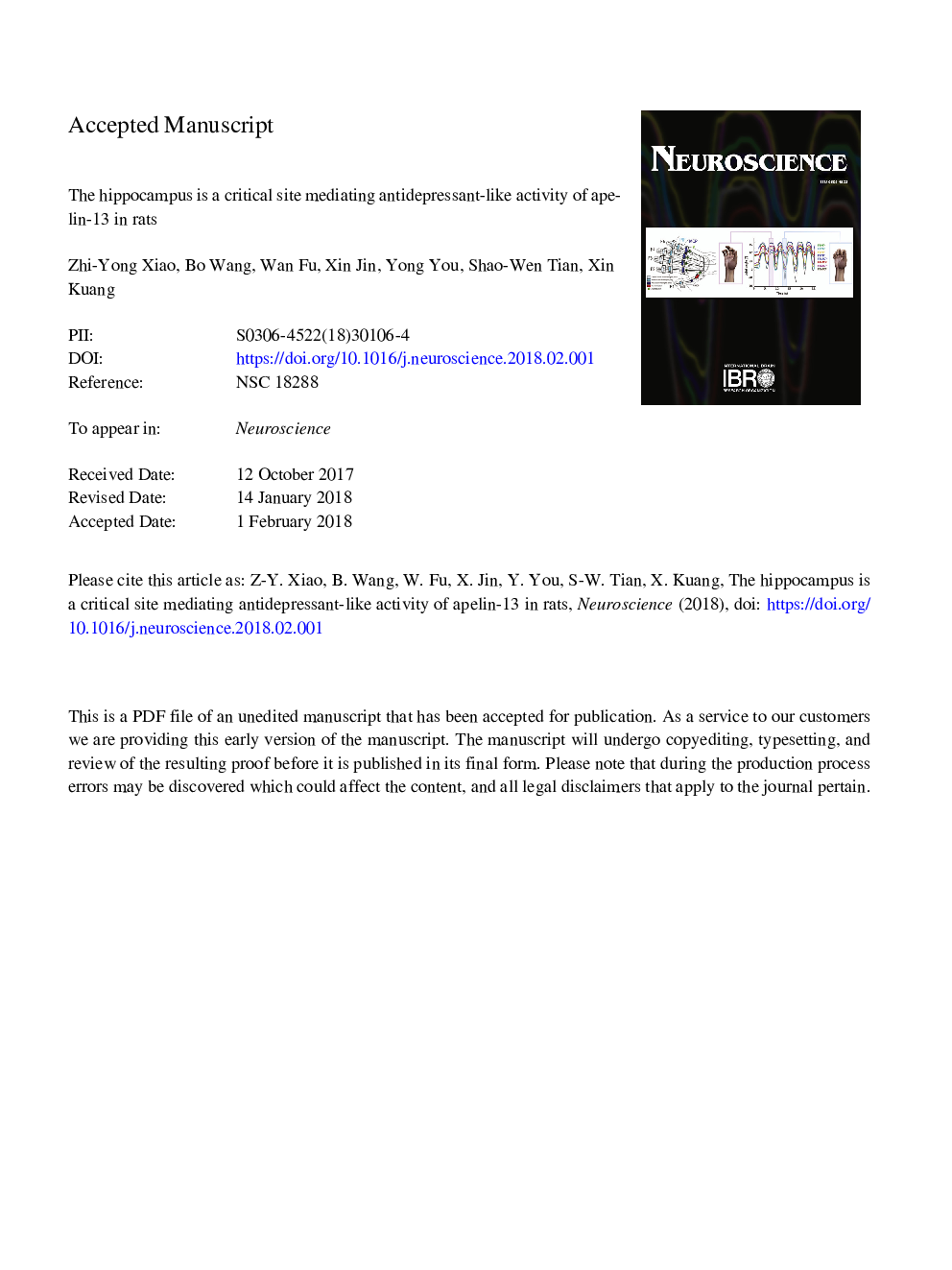| Article ID | Journal | Published Year | Pages | File Type |
|---|---|---|---|---|
| 8840901 | Neuroscience | 2018 | 29 Pages |
Abstract
The peptide apelin and its receptor APJ are found to express in multiple brain regions, especially in the regions such as the hippocampus and hypothalamus that play important roles in stress and depression. The distribution of apelin and APJ suggests that the apelinergic signaling may be a key mediator in the development of stress-related depressive behavior. We recently demonstrated that intracerebroventricular (i.c.v) injection of apelin-13 exerts an antidepressant-like activity in the rat forced swimming test (FST). However, the possible brain region mediating apelin-13's antidepressant-like activity remains unclear. In the present study, we determined whether the hippocampus and hypothalamus are the possible regions mediating antidepressant-like activity of apelin-13. We found that forced swimming exposure upregulated apelin and APJ protein expression levels in the hippocampus but not hypothalamus in rats. Further, intrahippocampal injection of apelin-13 exerted an antidepressant-like activity (as indicated by a decreased immobility behavior), and intrahippocampal infusion of APJ receptor antagonist F13A blocked the antidepressant-like activity produced by i.c.v injection of apelin-13 in the FST. Moreover, intrahypothalamic injection of apelin-13 did not affect the immobility behavior in the FST. These findings suggest that the hippocampus, but not hypothalamus, is a critical site mediating antidepressant-like activity of apelin-13 in rats.
Keywords
i.c.vCREBPI3KAPJERKOFTN-methyl-d-aspartateNMDAFSTintracerebroventricularBDNFOpen field testForced swimming testStressanalysis of varianceANOVAApelinAntidepressantBrain-derived neurotrophic factorPhosphatidylinositol 3-kinaseHypothalamusHippocampuscyclic AMP response element binding proteinextracellular signal-regulated kinase
Related Topics
Life Sciences
Neuroscience
Neuroscience (General)
Authors
Zhi-Yong Xiao, Bo Wang, Wan Fu, Xin Jin, Yong You, Shao-Wen Tian, Xin Kuang,
